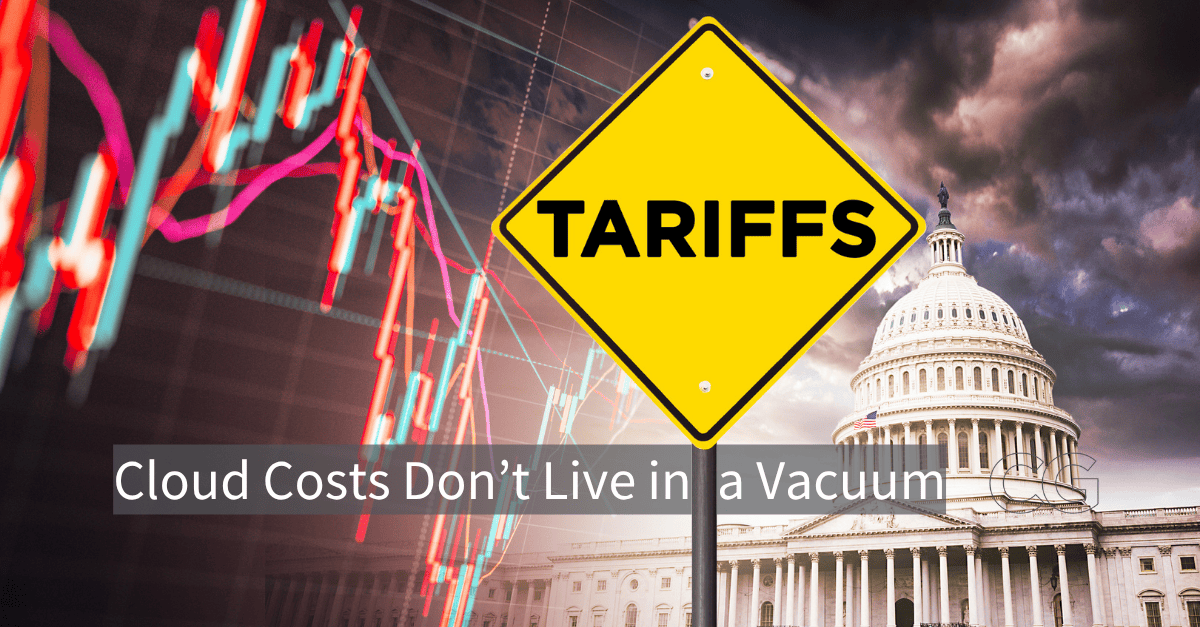Trump-era tariffs continue to focus on physical imported goods, not digital services. For companies using SaaS tools or relying on cloud platforms, that might sound like a green light to relax. But the story isn’t that simple.
While software subscriptions, cloud services, and professional consulting typically avoid direct tariffs, the hardware they run on doesn’t get a pass. And that’s where the real impact starts to surface.
The Pressure on Cloud Infrastructure
Cloud providers still need physical infrastructure: servers, GPUs, switches, and cooling systems. Most of these components are either imported directly or assembled with imported parts. When tariffs drive up the cost of this hardware, the pressure doesn’t disappear. It shifts downstream. Eventually, those costs can affect cloud pricing, either through gradual service increases or limited access to high-performance compute resources.
For organizations relying on public cloud platforms or global colocation providers, these hardware tariffs may lead to pricing changes.
What This Means for IT Leaders
If your current infrastructure plan assumes cloud services are unaffected by economic policy shifts, it’s If your current infrastructure plan assumes cloud services are unaffected by economic policy shifts, it’s time to revisit that assumption. Smart CIOs and infrastructure leaders are already asking:
- Where is my data hosted?
- How often are pricing models adjusted?
- What level of control do I have over hardware refresh cycles?
These questions focus on cost, stability, and predictability – factors that are increasingly difficult to guarantee in a strained supply chain.
CenterGrid: Infrastructure You Can Count On
At CenterGrid, we operate out of secure Midwest-based data centers. That means:
- We source and manage our own hardware
- We maintain fixed pricing tiers with full transparency
- We’re not dependent on global shipping cycles to keep your services running
The result is a cloud platform designed for cost control and consistent performance.
Whether you’re running mission-critical workloads or need predictable hosting for day-to-day operations, having control over infrastructure gives you a measurable advantage.
Virtual Studio: Creative Production Without Hardware Bottlenecks
This approach applies just as strongly to creative work. Virtual Studio was designed to replace the need for expensive, difficult-to-scale hardware environments.
As GPU costs fluctuate due to policy or market shifts, Virtual Studio provides remote-access workstations and on-demand render power without the uncertainty. Artists and producers can focus on delivery and quality, not supply issues or upgrade delays.
Resilience, Not Just Reaction: Thriving in a Changing Market
For U.S.-based businesses, this isn’t just a cost conversation, it’s a strategic one. Infrastructure choices now will influence more than your IT budget. They affect your ability to deliver consistent customer experiences, protect timelines, and scale confidently.
The companies that will thrive are the ones that treat infrastructure as a competitive asset – not a commodity. Relying on hyperscalers with opaque pricing models and global supply dependencies leaves too much to chance. By shifting to managed environments with known costs and local control, you gain room to maneuver, innovate, and grow without watching over your shoulder.
In moments of volatility, certainty becomes your best asset.
Even if your applications are in the cloud, the physical reality of infrastructure still matters. If your platform depends on gear caught up in supply chain constraints or tariff adjustments, it’s worth evaluating how much control you really have.
Now is the right time to assess how well your infrastructure strategy holds up when conditions change.

